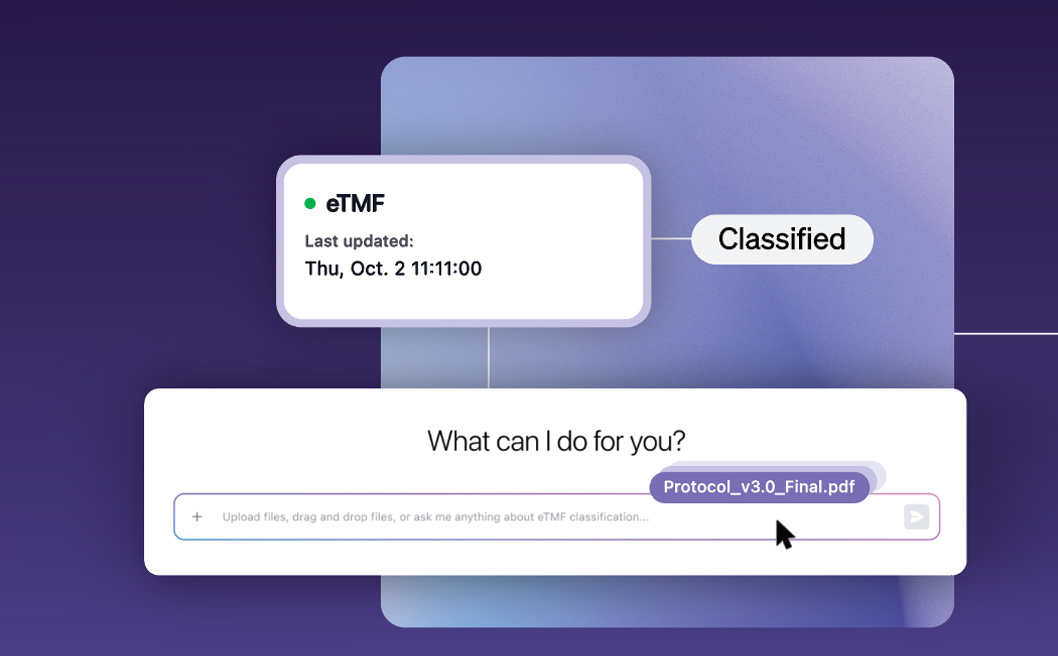Implementing digital informed consent (or eConsent) in clinical trials can be challenging and complex, but it doesn’t have to be!
One of the main reasons for this difficulty is the traditional mindset and habits of conducting clinical trials. Clinical trials have long relied on paper-based informed consent process, and making the switch to a digital solution requires a significant shift in mindset and approach. Additionally, different stakeholders, such as study sponsors, ethics committees, regulators, sites and patients, may have different expectations, perceptions and requirements for eConsent implementation, adding to the complexity of the process. Therefore, careful planning, communication, and a thoughtful execution are essential for the success of an eConsent implementation and adoption in studies.
Typically, there are two primary ways to implement eConsent in clinical trials: full-service implementation or an enabled eConsent model.
Full-service implementation involves partnering with a technology provider or a Contract Research Organization (CRO) who can provide end-to-end eConsent services, from building the eConsent platform to managing the consent process throughout the study. This approach is ideal for sponsors who may not have the resources, expertise, or bandwidth to manage the eConsent process in-house.
Enabled eConsent, on the other hand, brings the ownership of the eConsent implementation in-house, using internal resources and contracting with a technology provider who can provide an enabled eConsent solution. This approach is suitable for sponsors, or CROs, who have the necessary resources and expertise in-house and prefer to have complete control over the eConsent process.
Both approaches have their advantages, and the choice of the approach depends on several factors, such as the available resources, expertise, timeline expectations, and budget. Ultimately, regardless of the approach, having a holistic change management process in place that considers the proper planning, communication, training and execution are critical to ensure successful and smooth eConsent adoption in clinical trials.
Let's take a closer look at the process of enabled perspective of eConsent implementation in clinical trials.
Firstly, the enablement timeline for eConsent can vary from a few days to several weeks depending on the technology provider chosen. Regardless of the provider, it is essential to ensure that extra care and support are provided during the initial few study builds to ensure that the eConsent process is properly established. Consideration should be given to the lead time needed for technology delivery, consent template modifications, training and the build of supporting processes needed within groups such as Clinical Operations and Study Start Up. It should not be forgotten that a complete consent management solution should also facilitate multiple consent process options, included both remote and on-site discussions as well as both eSignature and Print to Sign options. Understanding the types of trials that suit these approaches, as well as the country regulatory and ethical requirements, will greatly help the overall adoption of the solution and remove the burden from the study teams on trying to work this out for themselves.
Secondly, the study specific implementation timeline will involve several critical activities that sponsors and CROs need to account for, such as making final decisions on the Informed Consent Form (ICF), the use of different kinds of enhanced media such as videos and knowledge checks, and carrying out User Acceptance Testing (UAT).
Finally, the overall management of the trial after go-live; it is imperative to properly track and manage published templates, removing them after they are amended and replaced, to ensure site staff can follow the most efficient and automated workflow the eConsent solution can provide and benefit from the improved quality of a digital process.
The nuances of implementing eConsent can sounds overwhelming but don’t let that intimidate your organization; the overall process can be straightforward if adequately planned and resourced and the resultant benefits across all stakeholders are significant. Striving for a standard implementation process can also help streamline the pain points and ensure successful implementation of eConsent in clinical trials, improving participant access, reducing site burden, improving quality and facilitating a greater level of oversight of the consenting process.
About the Authors:
Camila Matheny, Executive Director, DCT Offerings
An expert in clinical trial operations, Camila works closely with pharma, biotech, and CRO customers to articulate the value of adopting and implementing digital technologies to deliver decentralized and hybrid clinical trials. As a member of the SCDM eSource Consortium, DTRA, and EFGCP, Camila leads with data, the driving force behind bringing new therapies to market. With over 15 years of clinical trials experience, a background in data management, and a passion for the latest cutting-edge technologies, Camila provides a unique combination of expertise to help guide customers towards a better way to adopt and implement technologies the most impactful and sustainable way.
Andrew Mackinnon, VP, GM, eConsent
As General Manager for eConsent, Andrew Mackinnon oversees the development of the eConsent product, as well as the implementation of eConsent in Medable studies, ensuring that Medable’s clients can run high quality, effective and efficient decentralized clinical trials. Andrew has 20 years of experience in managing clinical trials at large Pharma, Biotech and CRO companies, most recently as a Senior Director in one of Covance’s therapeutic area delivery groups and as Head of Business Performance. From his involvement in one of the earliest deployments of decentralized methodologies, he has been passionate about the benefits that this approach can bring in reducing the burden of clinical research on both sites and patients and looks to leverage his broad operational expertise to improve how this approach is utilized.











